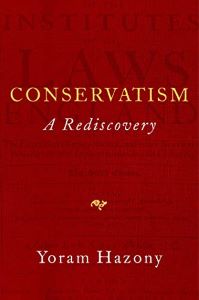Crushing – that’s the only way to describe the latest Liberal victory in Ontario. Crushing, and yet, not altogether surprising. In case nobody noticed, Ontario’s Big Blue Machine is dead and has been for years. And as a principled conservative, I say good riddance!
What’s left of that much vaunted apparatus – the backroom organization that propelled John Tory to the leadership of the Ontario Progressive Conservative Party despite an almost unbroken record of failure in electoral politics stretching back to Kim Campbell’s disastrous campaign in 1993, which he chaired – is neither big, nor is it even particularly blue. In fact, the Big Blue Machine was never really blue, but Liberal red.
The prevailing wisdom is that Tory’s promise to provide denominational schools conditional access to public funds did him and the party in. The election was his to win, but he fumbled it away on an unpopular and ill conceived policy that would have garnered him few votes anyways.
That’s the narrative – but is it really what happened?
Polls were showing that most Ontarians wanted change, and that the PCs under Tory’s leadership – running neck and neck with the incumbent Liberals – were the party best positioned to provide that change. Instead they chose to play it safe.
Consider the following: Under a McGuinty government, spending would have increased from around $82 billion this year to just over $96.5 billion in 2012. That’s a lot of money. Under a Tory government, however, spending would have grown to just under $96.5 billion. Not much difference there.
On health care, the Liberals promised to hire thousands of new nurses and create 100 more spaces in medical schools for student doctors, while the PCs said that they would be open to allowing more private sector involvement in the delivery of health care services. Both parties promised to reduce waiting lists especially, in the case of Tory’s PCs, for autistic children. Little to choose from there either.
On energy and the environment, both the Liberals and Conservatives, with some variations, promised to reduce Ontario’s dependency on coal fired generating stations, but this has been a staple of political platforms since the acid rain crisis of the early 1980’s. Again, not much to choose from between the two parties, and given the history, no real reason to believe either one.
On taxes, Tory did promise to repeal the McGuinty ‘health care premium’, but why bother? Since he planned to spend almost as much as the Liberals anyway, the net tax burden on Ontarians would have remained more or less the same under a PC government.
Law and order? Many of the problems require federal action to resolve, so unless the feds are on board, the reality of any provincial initiative to crack down on serious crime would inevitably fall far short of the promise.
Family and social issues? Hardly a word from either of the front-runners.
On policy after policy, Ontario’s Liberal Party and their PC rivals could best be likened to an unhappily married couple: two people who bicker from time to time, but who continue to share the same bed – one on the left, and one on the right.
Ironically, by promising to give parents of children who go to faith-based schools access to their own tax dollars, education was the one policy area in which the PCs did show some daring and insightful leadership. But even then, instead of defending the initiative as conservatives – emphasizing the advantage of choice and explaining the demonstrable benefits of competition to public education – Tory and the PC brain trust relied on typically liberal feel-good arguments such as fairness and equality to sell the plan. This is astonishing, inasmuch as some of the strongest opposition to the plan was bound to emanate from conservatives themselves. And in the end, because there was so little to distinguish the PC platform from the Liberal, when it became obvious that the proposal was being badly received, Tory was unable to successfully ‘change the channel’ because there was simply nothing of interest playing on any of the other stations.
There’s a lesson in this. To be successful, a conservative party must represent something more substantial than the mere fact that it isn’t the Liberal Party. It must have a bold and positive conservative platform that not only offers real choices to people, but explains why the conservative choice is the right one.
Most importantly, to be successful, a conservative party must have leaders – at all levels of the party – who are prepared to defend conservatism, even at the risk of electoral defeat. It must have leaders who understand that the centre of the political spectrum cannot be captured and held by chasing after it – it can only be captured and held by defining it. Ontarians as a whole, and Ontario conservatives in particular, have been very poorly served over the years by the ‘me too’ liberalism of the Big Blue Machine and its red Tory crew.
Maybe now conservatives will finally hold its funeral and turn the page. There’s a future to win.
RIP


 Conservatism: A Rediscovery explains how Anglo-American conservatism became a distinctive alternative to divine-right monarchy, Puritan theocracy, and liberal revolution. After tracing the tradition from the Wars of the Roses to Burke and across the Atlantic to the American Federalists and Lincoln, Hazony describes the rise and fall of Enlightenment liberalism after World War II and the present-day debates between neoconservatives and national conservatives over how to respond to liberalism and the woke left.
Conservatism: A Rediscovery explains how Anglo-American conservatism became a distinctive alternative to divine-right monarchy, Puritan theocracy, and liberal revolution. After tracing the tradition from the Wars of the Roses to Burke and across the Atlantic to the American Federalists and Lincoln, Hazony describes the rise and fall of Enlightenment liberalism after World War II and the present-day debates between neoconservatives and national conservatives over how to respond to liberalism and the woke left.